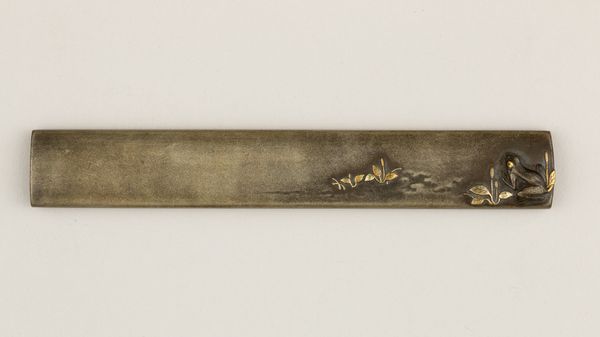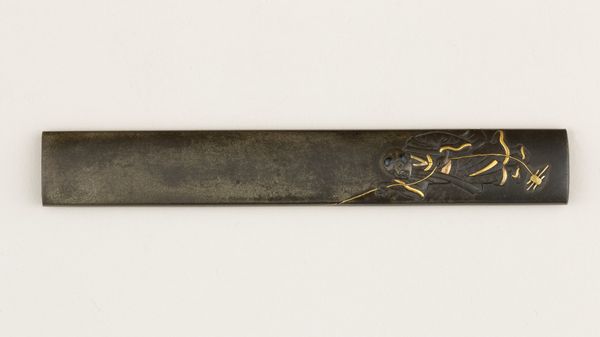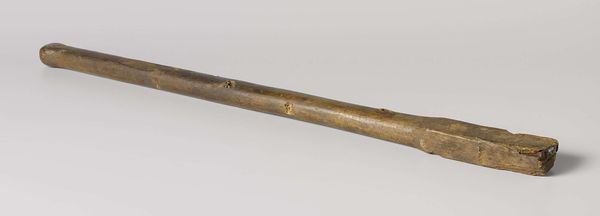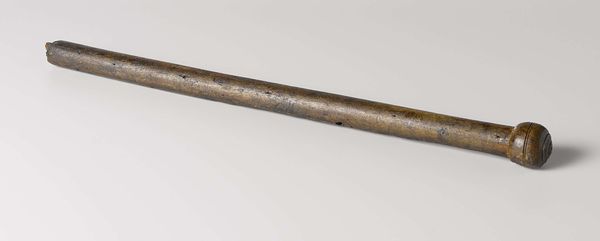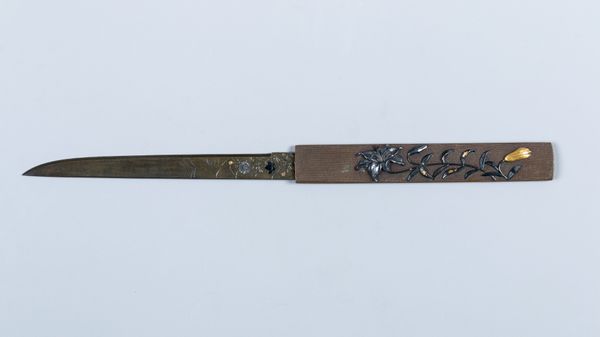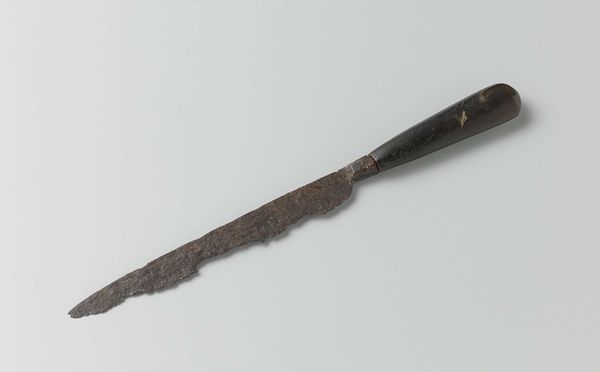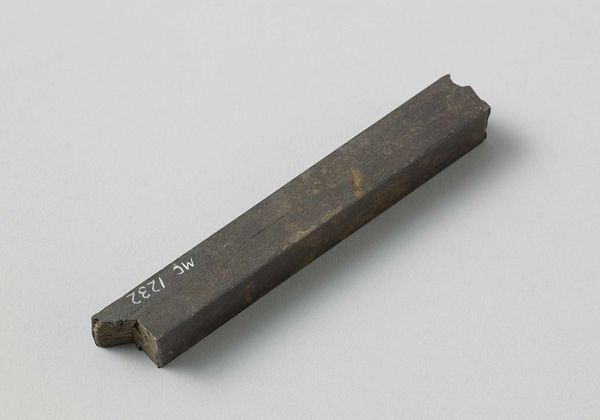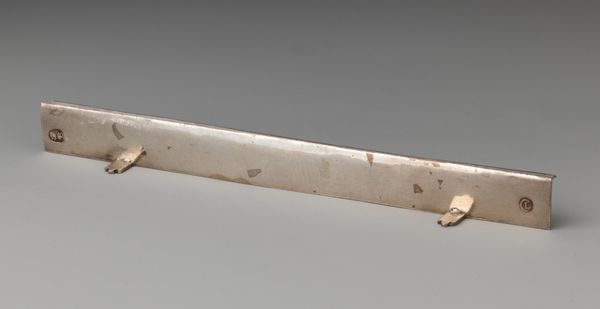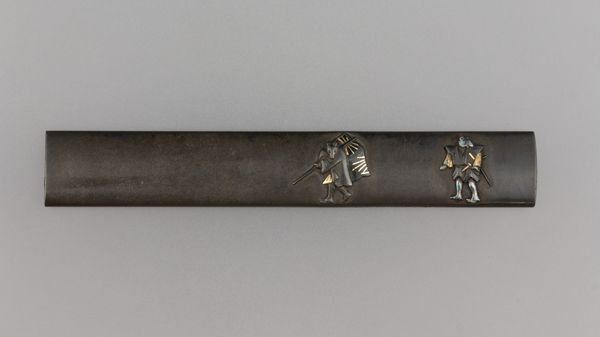
carving, metal, intaglio, sculpture
#
carving
#
metal
#
intaglio
#
sculpture
#
asian-art
#
sculpture
#
decorative-art
Dimensions: L. 3 13/16 in. (9.7 cm); W. 9/16 in. (1.4 cm); thickness 3/16 in. (0.5 cm); Wt. 1.2 oz. (34 g)
Copyright: Public Domain
Curator: Hello and welcome. We are standing before an exquisite "Kozuka," or knife handle, crafted sometime between 1825 and 1875. It's currently held at the Metropolitan Museum of Art and is signed by Kanō Natsuo. Editor: My first impression? Intimate. The scale draws you in, it whispers rather than shouts. There is a delicacy to the aged metal finish—it appears soft and begs to be touched. Curator: Indeed, despite its practical purpose, it transcends mere utility, achieving the status of fine art. Natsuo was known for bringing painting techniques into his metalwork. What do you observe in terms of its decorative qualities? Editor: Well, what jumps out is this delicate intaglio carving—the tiny scene seemingly depicts rodents feasting. This can be read in a multitude of ways. Are they unwelcome intruders, thriving on waste, or figures who expose abundance and the capability to waste resources? Curator: Absolutely. Animals in Japanese art, especially smaller creatures like rodents, often symbolize resourcefulness or can be commentaries on social hierarchies. But on a technical level, this handle represents high artistry; a smooth melding of utility and complex design. One may be tempted to handle the knife by focusing only on its most obvious qualities; what narratives are we not paying attention to as a consequence? Editor: These small forms of art, especially in functional objects, are critical for analyzing gender dynamics. When weaponry becomes so ornamented it also turns somewhat feminine, the user becomes feminized too. Does a weapon in itself dictate power dynamics or does a symbol exist detached from the means it's put to work with? I feel a complex web of assumptions begin to open up in this work. Curator: It's tempting to interpret the creatures literally but remember they’re as much about suggestion as presentation. The texture of the metal interacts with the incised lines, and as we look closer, there may be hidden meaning; so much information is condensed here. Editor: To see this piece within its art historical and cultural context is important because this piece offers more than surface level aesthetics; rather, it encourages viewers to actively question inherited beliefs by engaging in complex thought. It is not enough to admire what the artwork suggests, one must also understand and reflect what assumptions they brought with them when coming across the art, the location, and ultimately, what social implications an artwork contains. Curator: Right, art becomes truly fascinating when it urges to explore further into social and political concepts that art, like every cultural creation, holds. It is as useful as it is meaningful to keep this in mind during the upcoming stages of the tour. Editor: I could not agree more; these pieces of craftsmanship encapsulate a wide lens into power structures throughout human civilization and one is forced to critically reevaluate the purpose art takes for societal analysis.
Comments
No comments
Be the first to comment and join the conversation on the ultimate creative platform.
